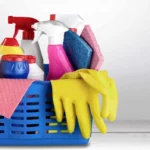Having a dog is like having your own child. You have to take care of them, look after them, teach them things, and you’re going to be responsible for how they grow up. Not a lot of people actually understand the rigors involved in being dog owners. That is why a lot of dogs end up being sent to shelters or left abandoned because their owners failed to truly realize what it means to be a good and responsible owner.
In this article, we are going to take you through the key fundamentals of dog ownership. This will hopefully serve as your guide if you ever decide on getting a dog at some point in the future. Here, we will talk about some of the most essential dog-related topics, including the proper scheduling of vet visits for dogs, the proper training, diet, and exercise.
Proper Vet Appointment Intervals
Your vet is going to be one of your key partners in keeping your dog in tip-top condition. Needless to say, it’s critical that you find someone that you can trust and that you’re comfortable working with when it comes to taking good care of your dog. Having someone that is knowledgeable about pets, in general, will also take a lot of stress and pressure off of pet ownership. This could be extremely useful, especially if you’re still starting out. Vets will typically contact and update you for vet appointments, which means that you’re going to be reminded of when your pet needs veterinary attention.
Generally speaking, expect that you will be visiting the vet quite often during the early stages of your dog’s life. This is so that their growth will be closely monitored and that they can receive the proper shots and vaccines for the prevention of different sicknesses and diseases. As they mature, vet visits are going to be less frequent. On top of that, these visits are going to be quite basic, and these are often done once or twice a year.
Once your dog reaches its senior years, trips to the vet are going to be more frequent again. This is because your dog will now require more extensive veterinary attention due to their slowly-degrading physical condition. This is all the more true for those dogs who have experienced specific health conditions that may require more frequent or regular checkups.
Proper Training
Training is an essential component of a dog’s life. Training ensures that your pet is disciplined and that they’re not going to be a nuisance to your everyday activities. There are different forms of training that you can do depending on the type of skill or trick that you want to teach your dog. For instance, it’s recommended that you start off with basic commands, such as sitting, staying put, fetching, etc. After you have gained a little bit more idea of how your pet responds to commands, you can move on to more complex commands.
Training also involves conditioning and discipline. Here, you’re mostly concerned with how your dog behaves and acts. This covers things such as where to pee or defecate, when to behave, what to chew and what not to chew, where to sleep, how to respond to other dogs, etc. Oftentimes this is the most neglected part of dog ownership. Some owners fail to understand the effort required to teach dogs how to act and behave properly. Understand that this process will require a lot of patience and determination on your part, so you have to be prepared to repeat a lot of things along the way.
Diet and Exercise
The best way to ensure that your dog gets the correct amount of nutrients is to refer to your vet’s recommendation. Typically, your vet will recommend a certain type and quantity of food to feed your dogs depending on their age, breed, and other relevant health factors. On the topic of diet, be sure to check if the food that you’re feeding your dog is safe for them to consume. Certain types of food, even those that are safe for human consumption, may not be entirely compatible with the digestive system of dogs. As such, it may be dangerous to feed them certain foods that we find delicious or appetizing.
Always consult a professional or do extensive research before feeding your dog anything. In these types of scenarios, it’s always better to be safe than sorry.



